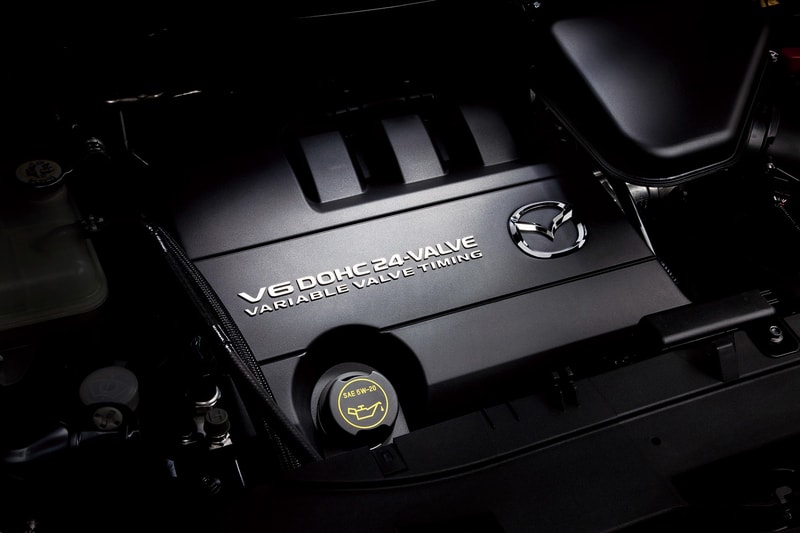The Mazda CX-9 will now benefit form upgrades to the engine, making it more fuel efficient. Consequently, the combined fuel consumption of the Mazda’s big SUV is now just 11.3 liters per 100 km (21 mpg), an improvement of 0,9 liters per 100 km as compared to before.
Mazda’s seven seat family SUV is still powered by the 3.7 liter V6 petrol engine, but power comes in at 272 hp ( 204 kW) and 367 Nm of torque. Additionally, the 6-speed Activematic transmission delivers the power to Mazda’s own on-demand Active Torque Split (ATS) all-wheel-drive system.
In order to achieve such figures, engineers have made significant improvements to the combustion control of the engine, in order to optimize efficiency during deceleration and idle time. Additional savings in fuel consumption were made by optimizing the efficiency of different gear control settings on the CX-9’s all wheel drive system as well as by reducing transmission friction.
The new, sportier looking 20 and 18 inch wheels, fitted with P245/50R-20 or P245/60R-18 tires, are lighter than the ones before, reducing unstrung weight and ensuring a more sportscar-like ride quality. Tire rolling resistance was also reduced, this being another fuel saving feature.
All models are equipped with three-zone climate control air-conditioning, alloy wheels, cruise control and power windows and mirrors. An MP3/WMA compatible CD player and a reversing camera with rear parking assistance are also offered. Satellite Navigation can be optioned on the CX-9 Luxury and is standard on the Grand Touring.
The Mazda CX-9 is a full-sized crossover SUV, also serving as an MPV. Based on the Ford CD3 Platform, it was unveiled at the 2006 New York Auto Show and went on sale in February 2007. The range includes three trim levels, Classic, Luxury and Grand Touring.
Mazda’s seven seat family SUV is still powered by the 3.7 liter V6 petrol engine, but power comes in at 272 hp ( 204 kW) and 367 Nm of torque. Additionally, the 6-speed Activematic transmission delivers the power to Mazda’s own on-demand Active Torque Split (ATS) all-wheel-drive system.
In order to achieve such figures, engineers have made significant improvements to the combustion control of the engine, in order to optimize efficiency during deceleration and idle time. Additional savings in fuel consumption were made by optimizing the efficiency of different gear control settings on the CX-9’s all wheel drive system as well as by reducing transmission friction.
The new, sportier looking 20 and 18 inch wheels, fitted with P245/50R-20 or P245/60R-18 tires, are lighter than the ones before, reducing unstrung weight and ensuring a more sportscar-like ride quality. Tire rolling resistance was also reduced, this being another fuel saving feature.
All models are equipped with three-zone climate control air-conditioning, alloy wheels, cruise control and power windows and mirrors. An MP3/WMA compatible CD player and a reversing camera with rear parking assistance are also offered. Satellite Navigation can be optioned on the CX-9 Luxury and is standard on the Grand Touring.
The Mazda CX-9 is a full-sized crossover SUV, also serving as an MPV. Based on the Ford CD3 Platform, it was unveiled at the 2006 New York Auto Show and went on sale in February 2007. The range includes three trim levels, Classic, Luxury and Grand Touring.

